Discovering Dubai's Architectural Wonders Through Imagery
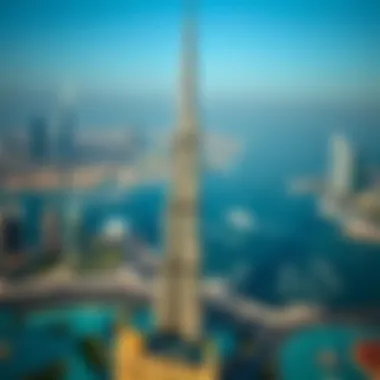

Intro
Dubai, a city where tradition meets modernity, boasts some of the most stunning landmarks in the world. The skyline, punctuated by towering structures and historic sites, is a testament to its rapid transformation. Let's embark on an enriched exploration, uncovering the stories and significance behind Dubai’s grand edifices through captivating images.
This article delves into distinct landmarks, revealing their architectural brilliance, cultural weight, and influence on the burgeoning real estate market in Dubai. Whether you’re an investor eyeing prime properties, a homebuyer in search of your dream abode, or simply an admirer of architectural marvels, understanding these landmarks is pivotal.
As we navigate through this visual journey, expect to uncover insights that blend the charm of history with the allure of modern investments. From iconic structures like the Burj Khalifa to the rich narratives surrounding Al Fahidi Historic District, this exploration is as much about the photographs as it is about the stories they tell. Each landmark holds a mirror to the city's soul, reflecting both its past and future aspirations.
Prelims to Dubai's Architectural Landscape
Dubai’s architectural scene is nothing short of extraordinary. At a glance, the skyline tells a story of ambition, creativity, and cultural synthesis. This article is going to delve into the architectural landscape of Dubai, analyzing its iconic landmarks and what they represent for a city that thrives on innovation.
Every structure from the Burj Khalifa to the historic Al Fahidi Historical Neighborhood plays a role far beyond mere shelter; these buildings embody Dubai’s dichotomy of tradition and contemporary flair. They serve as reminders of the rapid transformation the city has undergone over just a few decades, attracting tourists, investors, and residents alike.
Understanding the architectural landscape not only helps in appreciating the aesthetics but also offers insights into the economic and cultural dynamics at play. Each landmark tells a story, capturing the essence of the city’s identity and the values of its populace.
Beyond simple admiration, discussing these landmarks hones in on the benefits of investment opportunities. Investors and homebuyers will find a wealth of information on how these structures influence property markets, suggesting high potential areas for real estate development and investment.
Unique Blend of Tradition and Modernity
In Dubai, the interplay of old and new is continual and palpable. Skyscrapers like the Burj Al Arab rise against the backdrop of traditional wind-tower buildings, creating a visual dialogue between past and present. One cannot overlook how this merging creates a unique architectural narrative that attracts people from all walks of life.
- Cultural Reflections: The Jumeirah Mosque, one of the city's most photographed sites, offers insight into Islamic architecture while existing alongside ultra-modern hotels and shopping malls. This juxtaposition encourages a deeper appreciation of both architectural styles and their historical significance.
- Innovative Solutions: Additionally, the integration of sustainable building practices reflects the city's forward-thinking mindset. Structures like the Sustainable City showcase how modern innovations can harmonize with ecological considerations, setting a precedent for future constructions.
This rich blend fosters an atmosphere where visitors and residents alike can enjoy the visual delight of contrasting styles, enriching their experience of the city.
The Role of Landmarks in Urban Identity
Landmarks serve as much more than tourist attractions; they define a city’s character. Each iconic building helps shape Dubai’s identity on the world stage, establishing it as a hub of wealth, innovation, and cultural variety.
"A city without landmarks is like a body without a soul; it loses its sense of identity and direction."
- Civic Pride: Structures such as the Dubai Frame not only offer breathtaking views but also symbolize the unity of Dubai's residents and their pride in their homeland. These landmarks allow citizens to connect with their history while looking forward to the future.
- Development Catalysts: Moreover, they influence urban planning and development patterns. For example, the proximity to landmarks is often a major factor in real estate valuations. Properties near the Dubai Mall or the Palm Jumeirah command significantly higher prices, reflecting the allure these landmarks bring.
In sum, exploring the architectural landscape of Dubai illuminates the intricate relationship between urban identity and real estate dynamics, painting a richer picture of why these structures are more than just concrete and glass.
The Burj Khalifa: A Pinnacle of Modern Engineering
The Burj Khalifa towers above Dubai's skyline, not just in height but also in its profound impact on the city’s architectural narrative. This skyscraper isn't merely a testament to human ingenuity; it symbolizes the very spirit of Dubai — a city that married ambition with innovation. As the tallest building in the world, reaching a staggering height of 828 meters or 2,717 feet, it stands as a beacon drawing both tourists and investors, showcasing the potential that Dubai offers.
In this part of the article, we will unpack the layers of the Burj Khalifa, delving into its architectural design and the cultural significance it holds for the city. Both aspects play a critical role in making this landmark not just an engineering feat but also a cultural icon.
Architectural Design and Innovations
The architectural brilliance of the Burj Khalifa is the brainchild of Skidmore, Owings & Merrill, with Adrian Smith as the lead architect. It employs a Y-shaped, triple-lobed footprint which reduces the wind load on the building, allowing it to stand gracefully tall even in harsh weather conditions. The soaring structure is embellished with glassy exterior panels that reflect the sun's rays, providing not only beauty but also energy efficiency through thermal insulation.
Several innovative features make this building an engineering marvel:
- Handcrafted Materials: The builders utilized a mixture of polished dark bronze and glass, providing an intricate aesthetic while ensuring durability.
- High-Speed Elevators: Equipped with cutting-edge technology, they transport visitors at a staggering speed of 10 meters per second. You can actually feel the ascension as you travel up to the observation decks.
- Sophisticated Water Management: With its intricate water-supply systems that help in maintaining the lush green landscapes surrounding the building, the Burj Khalifa ensures sustainability amidst the desert environment.
All these features combined showcase that the Burj Khalifa is more than just a pretty sight; it’s a blend of artistic expression and technical prowess.
Cultural Significance and Popularity
Beyond its architectural magnificence, the Burj Khalifa is deeply intertwined with Dubai’s identity. It stands in the heart of Downtown Dubai, surrounded by a vibrant community, from the Dubai Fountain to the Dubai Mall. This location highlights its role as a cultural epicenter, a place where locals and tourists converge, sharing experiences and fostering connections.
The significance extends deeper:
- Symbol of Ambition: For many, the Burj Khalifa embodies Dubai's rapid growth and unwavering aspirations. It symbolizes a city that dreams big, inviting others to be part of its journey.
- Attracting Investment: The skyscraper bolstered Dubai's reputation on the global stage, attracting countless foreign investments. It acts as a magnet for those looking to tap into the thriving real estate market.
- Cultural Events: The Burj Khalifa isn’t just a backdrop; it participates in cultural celebrations. Each New Year, it hosts one of the world’s most extravagant firework displays, drawing attention and admiration globally.
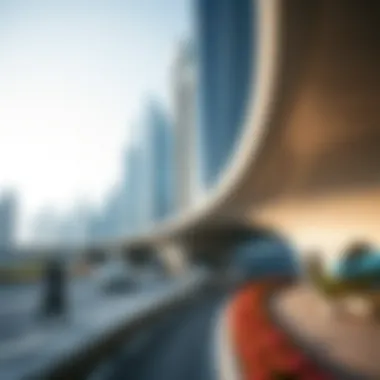

In summary, the Burj Khalifa represents the convergence of architectural brilliance and cultural vitality. It invites everyone to witness, share, and partake in the tale of a city that continues to redefine modern living.
The Palm Jumeirah: An Engineering Marvel
The Palm Jumeirah stands as a bold testament to human ingenuity and vision. It is not just a luxurious resort destination but also an engineering marvel that has transformed the skyline of Dubai. This remarkable archipelago was designed to resemble a palm tree, a symbol of growth and prosperity in Arabian culture. Through its intricate architecture and well-planned infrastructure, it showcases how mega projects can redefine urban spaces and offer distinct lifestyle benefits.
Development and Construction Insights
Constructing The Palm Jumeirah was no small feat. The ambitious project began in 2001 and involved the incredible relocation of sand and rock to create over 120 kilometers of shoreline. The island's shape was specifically chosen not only for aesthetics but to maximize waterfront properties, thereby enhancing the real estate appeal. An impressive array of construction techniques was employed, including the use of dredging and land reclamation, to ensure the island's stability and sustainability.
The surprising aspect of the construction phase is the careful planning behind every detail. Engineers paid special attention to the environmental impact, employing methods to protect the marine ecosystem surrounding the island. The results of these efforts are visible today, with The Palm hosting thriving aquatic life beneath its glistening waters.
"The construction of The Palm Jumeirah is a remarkable story of vision, precision, and determination, blending nature and modernity seamlessly."
While the island initially catered to the wealthy, over time, it has also become a hub for various social classes. This inclusive nature is evident in how the community has developed, combining high-end villas and hotels alongside public beaches and leisure activities, making it a desirable location for a diverse array of residents.
Impact on Real Estate Values
The impact of The Palm Jumeirah on real estate values in Dubai cannot be overstated. This project has transformed property value dynamics in the region dramatically. One major reason for this is the exclusivity and prestige associated with owning a property on the Palm, where values continue to climb, reflecting both prime location and luxury lifestyle. Properties on the crescent alone have seen prices soar due to their unique position and unparalleled views.
Furthermore, the development has spurred a host of additional investments surrounding the area, from luxury hotels to dining and entertainment venues. This growth has led to an overall uplift in property demand, making it highly attractive to investors and homebuyers alike. Beyond the financial aspects, living on The Palm offers residents a lifestyle defined by access to world-class amenities and pristine beaches, enhancing its marketability.
In summary, The Palm Jumeirah represents a strategic blend of engineering excellence and real estate strategy. As Dubai continues to evolve, the significance of this man-made island remains at the forefront of its architectural narrative, showcasing how vision can create a truly unique living experience.
Dubai Marina: A Waterfront Oasis
The Dubai Marina stands as a notable symbol of modern luxury and urban design within the vibrant landscape of Dubai. This area not only enchants residents and tourists alike with its stunning skyline and breathtaking waterfront views but also serves as a cornerstone in the city's real estate market. As one of the world’s largest man-made marinas, it has become a hub for both leisure and business, attracting investment from all corners of the globe. The unique combination of residential, commercial, and recreational spaces plays a pivotal role in enhancing the lifestyle of its inhabitants and elevating the overall appeal of Dubai as a prime living destination.
Design and Architectural Influence
Delving into the architectural aspect, the design of Dubai Marina is nothing short of spectacular. As you stroll along the pedestrian walkway, the modern skyscrapers tower majestically, each reflecting a unique aesthetic that intertwines luxury and practical design. Iconic structures like the Princess Tower and the Elite Residence reshaped the skyline, demonstrating innovative architectural techniques.
The master plan for Dubai Marina reflects a harmonious blend of modernity and functionality. The residences vary from high-rise towers to quaint waterfront apartments, creating a diverse selection catering to various tastes and budgets. The mixed-use development provides essential amenities at one’s doorstep, from dining options to shopping outlets, contributing significantly to the livability of the area.
"Dubai Marina stands as a testament to human ingenuity, showcasing how architecture can redefine urban living."
Additionally, sustainability is becoming an integral part of the design philosophy. Many buildings incorporate energy-efficient technologies, enhancing their environmental footprint while ensuring residents enjoy a comfortable lifestyle. This dedication to eco-friendly design reflects the city's vision of sustainable urban development.
Lifestyle and Community Aspects
Life in Dubai Marina is vibrant and dynamic; it's more than just residency—it's a lifestyle. The marina is peppered with parks, gyms, and recreational facilities that promote an active and healthy living environment. The public spaces not only enhance community engagement but also provide scenic spots for leisurely strolls or family picnics.
The neighborhood fosters a tight-knit community atmosphere, with numerous events organized throughout the year. Weekends often see gatherings at the beach or bustling markets, where locals and expats mingle and share experiences. This sense of community is a key draw for families and young professionals alike, contributing to the overall quality of life.
Moreover, the marina is a culinary haven, with restaurants and cafes serving cuisines from around the world. Whether you’re in the mood for a casual bite or a fine dining experience, the culinary diversity caters to every palate.
Living in Dubai Marina also provides easier access to other parts of the city via a well-connected public transport system, including the Dubai Metro and water taxis. This connectivity, combined with accessible schools and healthcare facilities, ensures that residents have everything they need within reach.
The Dubai Mall: More Than Just Retail
The Dubai Mall stands not merely as a shopping destination, but also as a pivotal social and economic hub for visitors and residents alike. When discussing Dubai's landmarks, this expansive mall features prominently, illustrating the city's growth through unique consumer experiences and architectural excellence. As the world’s largest retail and entertainment destination, it catalyzes the local economy and plays a vital role in establishing Dubai's image as a global shopping paradise.
Architectural Highlights
The architectural design of The Dubai Mall is a marvel in itself. Its sprawling structure covers an area of over 1.1 million square meters, complemented by a sleek glass facade that reflects the vibrant cityscape. The combination of modern design elements and cultural influences creates a space that feels both inviting and enthralling. Key highlights of its architecture include:
- The Grand Atrium: This feature acts as a focal point, showcasing a mesmerizing blend of light and space, enhanced by intricate artwork and modern displays.
- The Waterfall: One of mall's standout features, this indoor waterfall cascades several stories, illustrating the harmonious blend of nature and architecture.
- Burj Khalifa Views: Each window is strategically placed to offer patrons striking views of the nearby Burj Khalifa, a constant reminder of Dubai’s architectural prowess.
Such features do not only make shopping functional but also create a memorable experience for all who visit. Visitors often find themselves stopping to take pictures, bringing life to a space that could easily turn pedestrian.
Economic Impact on the Surrounding Area
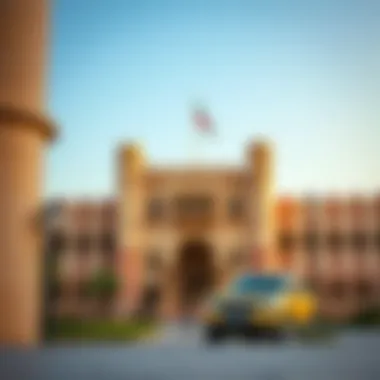
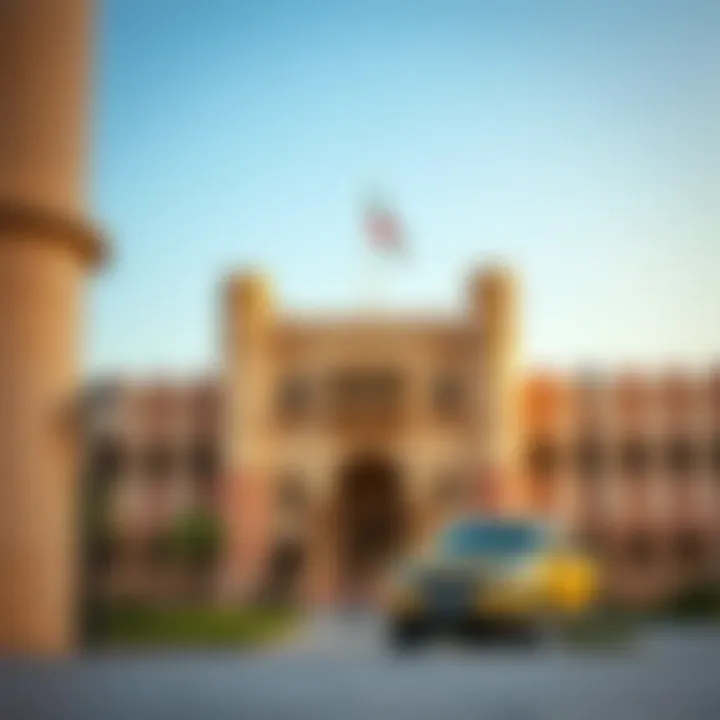
The impact of The Dubai Mall on the local economy cannot be overstated. It acts as a significant driver for tourism and local businesses, enhancing property values in the vicinity. Here are some aspects of its economic influence:
- Job Creation: The Mall generates thousands of jobs, offering employment opportunities that range from retail sales to management roles.
- Increased Foot Traffic: With millions of visitors each year, local shops and eateries outside the mall benefit from the foot traffic, boosting their sales.
- Real Estate Development: The surge in visitors and potential customers has led to increased property developments in areas surrounding the mall, attracting investors looking to capitalize on the boost in real estate value.
"The mall not only focuses on retail but rather creates a lifestyle, fostering community and interaction, which is essential to urban growth."
In the grander scheme, The Dubai Mall illustrates the vibrant interplay between architecture and economy. As an anchor for customization in retail experiences, it shapes and reflects the aspirations of a bustling metropolis, channeling not just goods, but a way of life that is becoming synonymous with Dubai itself.
Historic Sites: Preserving Dubai's Heritage
The preservation of historic sites in Dubai plays a crucial role in maintaining the city’s unique identity amidst rapid modernization. These sites act as windows into the past, offering a glimpse of traditional Emirati life and culture. Understanding the significance of these areas isn't just about nostalgia; it reflects a broader narrative about the values and history that continue to shape Dubai today.
Al Fahidi Historical Neighborhood
Al Fahidi, also known as Al Bastakiya, is one of the few remaining traditional districts in Dubai. Here, the contrast between ultra-modern skyscrapers and ancient wind-tower architecture is striking. Wandering through its narrow lanes, one can’t help but feel as though they've stepped back in time. This neighborhood features well-preserved buildings, many of which date back to the late 19th century.
- The wind towers, a hallmark of traditional Emirati architecture, allow for natural cooling in the sweltering desert heat.
- Visitors can explore art galleries, cultural centers, and museums that amplify the significance of this heritage site.
"Al Fahidi is not just a place; it is a narrative of resilience, imagination, and history, painted in the hues of sand and sun."
The neighborhood also serves as a cultural hub, hosting events and workshops focusing on Emirati art, calligraphy, and craft-making. It reflects a community that values its roots even as it embraces the future. This blending of old and new makes Al Fahidi a prime spot for photographers eager to capture both the beauty and the essence of Dubai's storied past.
Dubai Museum's Role
The Dubai Museum, housed within the Al Fahidi Fort, plays an instrumental role in narrating the city’s transformation from a humble fishing village to a global metropolis. Exhibitions are curated in a manner that engages visitors, making history feel tangible. From artifacts to dioramas, they tell stories of the people who shaped Dubai's cultural and economic landscape.
- The museum showcases traditional Emirati lifestyle, detailing aspects of daily life, trade routes, and the important pearl diving industry.
- Its location in one of the oldest structures in Dubai adds authenticity to the experience.
The museum isn't merely a display of history; it fosters community engagement and educational opportunities for residents and visitors alike. It reflects an understanding among Dubai's leaders that preserving heritage isn’t just beneficial for tourism; it’s essential for cultivating a sense of belonging and identity in a rapidly changing social landscape.
In summary, historic sites like Al Fahidi and the Dubai Museum are not only vital for preserving the past but also serve as anchors for Dubai’s future. They remind both locals and tourists of the values, traditions, and stories that have woven together the rich tapestry of this remarkable city.
Cultural Landmarks: A Testament to Diversity
The United Arab Emirates, especially Dubai, stands as a vibrant tapestry woven from the threads of various cultures and histories. When one speaks of cultural landmarks in Dubai, it is impossible to overlook how these sites act as pillars of the community, embodying the city’s rich past, present, and hopeful future. They provide a window into not only the traditions of the Emiratis but also the influences that various expatriate communities have brought along when making Dubai their home.
The Sheikh Mohammed Centre for Cultural Understanding
The Sheikh Mohammed Centre for Cultural Understanding serves as a beacon for fostering intercultural dialogue among the diverse populations residing in Dubai. Positioned in the historic Al Fahidi Neighborhood, the center offers programs that enlighten both tourists and residents about the local culture and customs.
Visitors can partake in a range of activities, such as guided tours, traditional meals, and discussions about Islamic practices. The center’s mantra, "Open Doors, Open Minds," is more than just a slogan; it invites exploration and queries that help dispel myths and build connections across cultural boundaries. Through events like the Emirati Breakfast and cultural awareness sessions, individuals from all backgrounds learn about the significance of local traditions and how they influence contemporary life in Dubai.
In promoting understanding, the center also emphasizes the importance of community engagement. Residents are encouraged to share their stories, creating a richer and more nuanced narrative that respects the countless experiences of Dubai's multicultural personae.
The Jumeirah Mosque: Architectural Splendor
The Jumeirah Mosque is perhaps the most photographed mosque in Dubai, and for compelling reasons. Opened to non-Muslims, it stands as a symbol of openness and inclusivity while showcasing the intricate beauty of Islamic architecture. Designed in the traditional Fatimid style, it features stunning domes, beautiful minarets, and expressions of artistry that draw visitors from around the globe.
Beyond its aesthetic appeal, the mosque is a hub for intercultural dialogue, welcoming thousands of visitors annually. Guided tours are conducted with the aim of sharing insights about Islamic faith and practices, shedding light on the architectural essentials that define the structure. Visitors often leave not just with an understanding of the building's beauty but with a profound sense of respect for the traditions it upholds.
Its illuminated structure against the Dubai skyline provides a mesmerizing backdrop for photography, encapsulating the essence of what makes Dubai a remarkable melting pot of cultures. Whether it's the grandeur of its architecture or the principles it espouses, the Jumeirah Mosque stands out not merely as a religious site but as a touchstone for understanding tolerance and coexistence in a bustling metropolis.
"Cultural landmarks like the Sheikh Mohammed Centre and the Jumeirah Mosque are vital in preserving heritage while fostering respect among diverse communities, which is key for harmonious coexistence in a rapidly evolving city like Dubai."
The Role of Photography in Documenting Landmarks
In an age where visuals reign supreme, the role of photography in capturing the essence of architectural wonders cannot be overstated. Photographs do more than just freeze a moment in time; they shape the narrative surrounding the landmarks by providing a way for people to connect emotionally. Whether it’s the towering Burj Khalifa or the intricate design of the Jumeirah Mosque, these images act as gateways, inviting viewers to explore the rich stories behind them.
Capturing Architectural Beauty
Photography plays a pivotal role in showcasing the unique architectural styles that define Dubai's skyline. Each structure is a canvas of creativity, expression, and innovation, often reflecting the cultural influences of the region. When a photographer steps into the frame, they’re not just clicking a button; they’re interpreting a story laden with history and aspiration.
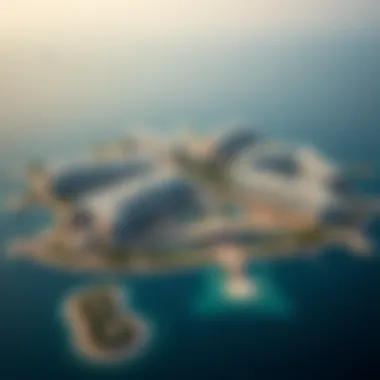
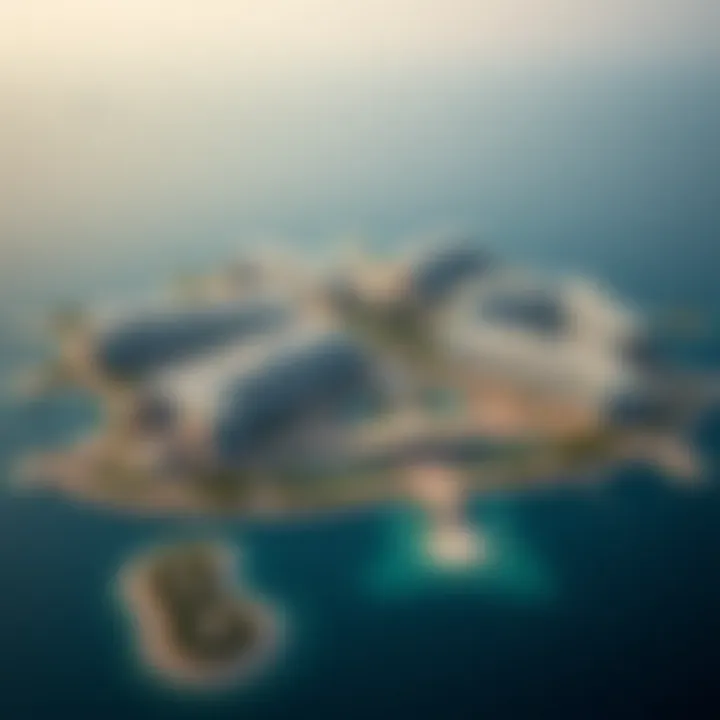
Consider the way natural light interacts with and accentuates a building’s curves and lines throughout the day. A skilled photographer, often equipped with just a standard lens, can transform an ordinary snapshot into an extraordinary visual statement that highlights the textures and details, like the intricate lattice work of the Sheikh Mohammed Centre or the sleek surface of The Dubai Mall.
Additionally, framing is crucial. A photograph that captures the landmark with its surrounding environment can tell a broader story about the urban life that inhabits the spaces. For example, positioning the Dubai Marina in the foreground while allowing the skyscrapers to loom in the background provides a visual juxtaposition of modernity against the backdrop of nature.
- First, consider the light; early mornings or twilight often provide the softest, most flattering illumination.
- Second, think about the angle; varying your perspective can dramatically shift the viewer's understanding of the building's scale and significance.
- Lastly, pay attention to your composition. Using framing techniques, such as leading lines or symmetry, can enhance the aesthetic appeal of the photograph.
Without a doubt, the adept use of photography to highlight architectural beauty not only preserves but also reanimates the landmarks for future generations to experience.
Influence on Social Media Presence
In today’s digital world, photography serves as the visual currency of social media platforms, where stunning images can amplify a landmark's visibility almost instantaneously. When a visually striking photo of a landmark is posted on Instagram, it can draw thousands of likes and shares, creating a ripple effect that reaches intended and unintended audiences alike.
Photography enables not just documentation but also an effective marketing tool for real estate agents, investors, and developers. An eye-catching image can catalyze interest in properties near these landmarks, fueling discussions about investments and residential opportunities. Each click, comment, or share can serve to bolster a landmark’s reputation, ultimately driving traffic to nearby real estate offerings.
"A single photograph can initiate a conversation that spans continents and cultures, transcending language barriers."
Moreover, photography can humanize a location. By showcasing people interacting with these landmarks—families enjoying time at the Dubai Fountain or tourists marveling at the design of the Museum of the Future—social media can reflect the vibrancy and lifestyle associated with these spaces. This not only heightens the structure's allure but also entices potential homebuyers by picturing their future experiences.
To capitalize on this trend:
- Utilize high-quality images to capture attention.
- Develop a consistent thematic narrative that aligns with your brand.
- Open dialogues with followers by asking for their perspectives and experiences related to the landmarks.
In closing, photography is more than an act of taking pictures; it is a vital thread in the fabric of Dubai's narrative tapestry, intricately weaving together elements of community, culture, and commerce.
Future Landmarks: Projects Under Development
The landscape of Dubai is ever-changing, evolving as architects and engineers push the boundaries of design and imagination. As the city looks to the future, new projects are stepping into the limelight, representing not only innovation but also the aspirations of a community and economy looking ahead. Future landmarks serve as beacons, signaling what's to come while also enhancing the city's already rich tapestry of culture and structure.
Dubai Creek Tower: A New Icon
Envisioned to stand taller than the Burj Khalifa, the Dubai Creek Tower is designed to be a symbol of hope and ambition. Located in the Dubai Creek Harbour development, this structure is the centerpiece of an ambitious urban project that seeks to redefine luxury living through sustainability and innovation.
The design of the tower draws inspiration from the lily flower and the minarets of traditional Islamic architecture, intertwining cultural significance with modern aesthetics. Some highlights of the project include:
- Height and Design: Estimated to rise around 1,300 feet, it will become the tallest structure in the world.
- Multi-Purpose Space: The tower will house observation decks, restaurants, and event spaces, making it a hub of activity.
- Sustainability: The design includes eco-friendly initiatives like solar energy and advanced air filtration systems.
This landmark will serve several purposes—while attracting tourists and investors alike, it will also contribute to the local economy by housing innovative business ventures and community spaces. Moreover, its strategic position along the Dubai Creek ensures unparalleled views of the waterfront and the surrounding urban environment.
The Museum of the Future's Vision
The Museum of the Future is not merely a building; it's a statement about what lies ahead for Dubai and its visitors. Positioned along Sheikh Zayed Road, this museum aims to foster innovative ideas and technologies that will shape our future. With its unique torus shape, it stands out in a city known for its architectural marvels.
Renowned for its futuristic design and interactive exhibits, the museum will explore various themes such as:
- Technology: Exhibitions focused on robotics, AI, and future city designs that will challenge conventional perspectives.
- Sustainability: It aims to address pressing global issues like climate change through innovative solutions and community collaboration.
- Cultural Preservation: The museum will strive to bridge the past with the future, highlighting the importance of preserving cultural heritage while embracing modernity.
"The Museum of the Future reflects a paradigm shift towards innovation and experimentation, enticing the curious minds to ask and explore beyond today's horizons."
Final Thoughts on Dubai's Landmarks
As we draw the curtain on our exploration of Dubai's awe-inspiring landmarks, it becomes clear that these structures are more than just mere architectural feats. They serve as a reflection of the city's ambitions, cultural diversity, and economic dynamics. The impact of these landmarks goes far beyond their physical presence; they shape the very identity of Dubai and influence the lives of its residents and visitors alike.
The Interplay of Architecture and Real Estate
In Dubai, architecture is not just about aesthetics; it intertwines intricately with real estate. The towering Burj Khalifa, for example, isn't simply a stunning skyline piece. It encapsulates a wealth of investment opportunities. Properties near iconic landmarks usually see a surge in demand, driving up both rental and sale prices. This dynamic creates a funnel of interest for investors, homebuyers, and renters alike.
- Location Value: Iconic structures bolster the desirability of surrounding areas. The Palm Jumeirah, with its unique underwater construction, attracts both wealthy buyers and tourists keen on experiencing luxury.
- Brand Perception: Landmarks generate a brand identity for districts. An address near the Dubai Mall or the Marina carries a prestige that many seek.
- Urban Planning: Future developments, like the Dubai Creek Tower, are already shaping plans for new neighborhoods aimed at ensuring a blend of commerce, residential, and cultural spaces. This projected growth, driven by landmark developments, adds layers to property valuation strategies that are essential for potential investors.
The Impact on Local Communities
The presence of these landmarks extends its influence deep into the fabric of local communities. They foster social cohesion by providing shared spaces for recreation, learning, and interaction. Take the Sheikh Mohammed Centre for Cultural Understanding; it not only showcases architectural beauty but also promotes cultural dialogue, bridging gaps between residents and newcomers.
- Job Creation: Each landmark typically brings significant employment opportunities, both during construction and in ongoing operations. The Dubai Mall, for instance, employs thousands, contributing to the local economy.
- Cultural Engagement: Structures like the Jumeirah Mosque open the doors for dialogue and understanding among varied cultures, making the community more inclusive.
- Tourism and Local Business: Tourists flock to iconic sites, which in turn bolsters surrounding small businesses—from cafes to boutiques, creating a thriving ecosystem that benefits local entrepreneurs.
"Dubai’s landmarks are not merely eye candy; they are the heartbeat of the city, connecting diverse cultures and fueling its relentless momentum."
Through this lens, we understand that Dubai’s landmarks are significant beyond their visual appeal. They are conduits of opportunity, culture, and community that continue to shape the city’s narrative in profound ways.







